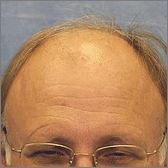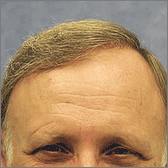

Hair transplant surgery is a procedure in which hair is moved from the back and/or sides of the scalp, where the hair is permanent (donor area), to areas that are thinning or bald on the front, top, or crown of the scalp (recipient area). Once transplanted, the hair will continue to grow for a person's lifetime.
Surgical hair transplant techniques include punch grafts, mini-grafts, micro-grafts, slit grafts, and strip grafts for a more modest change in hair fullness. Flaps, tissue-expansion and scalp-reduction are procedures for patients who desire a more dramatic change.
Today hair restoration surgery is a one day out-patient procedure requiring only local anesthesia. Most patients are surprised by how little discomfort, if any, they experience during and after surgery.
Hair transplantation involves removing small pieces of hair-bearing scalp grafts from a donor site and relocating them to a bald or thinning area. Grafts differ by size and shape. Round-shaped punch grafts usually contain about 10-15 hairs. The much smaller mini-graft contains about two to four hairs; and the micro-graft, one to two hairs. Slit grafts, which are inserted into slits created in the scalp, contain about four to10 hairs each; strip grafts are long and thin and contain 30-40 hairs.
Generally, several surgical sessions may be needed to achieve satisfactory fullness-and a healing interval of several months is usually recommended between each session. It may take up to two years before you see the final result with a full transplant series. The amount of coverage you'll need is partly dependent upon the color and texture of your hair. Coarse, gray or light-colored hair affords better coverage than fine, dark-colored hair. The number of large plugs transplanted in the first session varies with each individual, but the average is about 50. For mini-grafts or micro-grafts, the number can be up to 700 per session.
Recovery time: With today's very refined micro hair transplantation procedure the incisions are very small and less invasive than past procedures. This results in more rapid healing. Most patients feel fine within a day or two following surgery, although some numbness and mild soreness can be expected for several days following surgery.